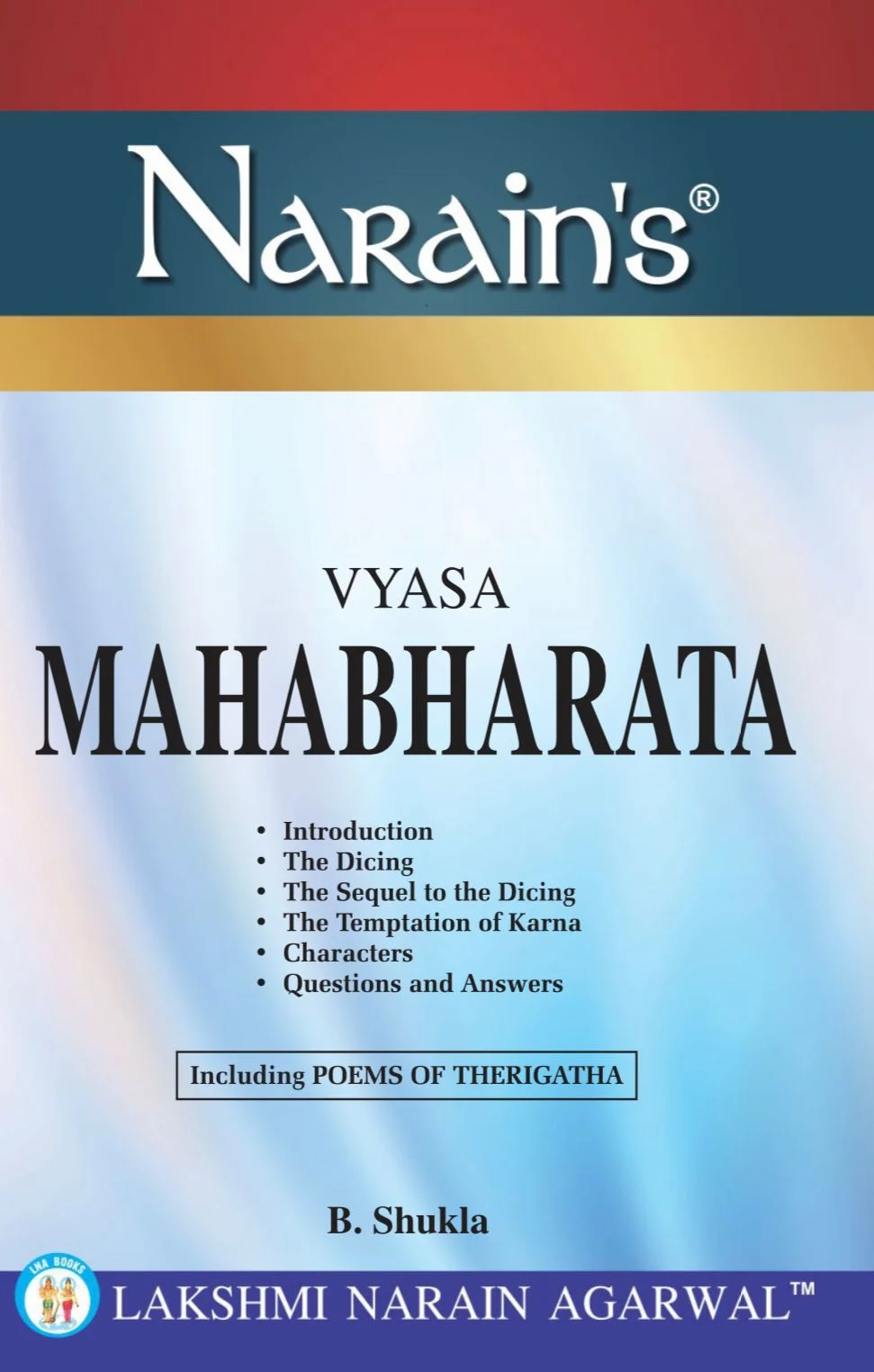Mahabharata

Mahabharata
Embark on an enchanting journey through fiction! Secure your copy now by reaching out to us at +919450432125 and immerse yourself in captivating worlds.
Over View
The Vyasa Mahabharata, often simply referred to as the Mahabharata, is one of the two major Sanskrit epics of ancient India, the other being the Ramayana. Attributed to the sage Vyasa, the Mahabharata is a vast and complex narrative that weaves together mythology, philosophy, and moral teachings. Comprising over 100,000 shlokas (verses) and divided into 18 parvas (books), the epic centers around the great Kurukshetra War but also delves into various subplots, discourses on dharma (righteousness), and the teachings of the Bhagavad Gita.
The story revolves around two factions of the Kuru dynasty: the Pandavas and the Kauravas. The Pandavas, consisting of Yudhishthira, Bhima, Arjuna, Nakula, and Sahadeva, are the sons of King Pandu, while the Kauravas, led by Duryodhana, are their cousins and rivals. The conflict between the two families intensifies due to Duryodhana’s jealousy and ambition, leading to the infamous game of dice where the Pandavas lose their kingdom and are forced into exile.During their exile, the Pandavas face numerous challenges, including the marriage of Arjuna to Draupadi and their eventual return to reclaim their kingdom. The attempts at peace fail, and the stage is set for the climactic Kurukshetra War, where both sides gather massive armies.
The epic reaches its zenith with the Bhagavad Gita, a philosophical discourse between Lord Krishna and Arjuna, taking place on the battlefield just before the war begins. The Bhagavad Gita addresses profound concepts of duty, righteousness, and devotion.
The Kurukshetra War is a brutal and tragic conflict that results in the deaths of many warriors, including key figures like Bhishma, Drona, Karna, and the sons of the Pandavas. The war also features divine interventions, with Krishna playing a crucial role as the charioteer and advisor to Arjuna. Ultimately, the Pandavas emerge victorious but at a great cost, as the war takes a heavy toll on both sides.Post-war, Yudhishthira becomes the king, but the burden of guilt and sorrow weighs heavily on him. The Mahabharata concludes with the death of Krishna and the Pandavas renouncing the throne to embark on their final journey to the Himalayas. Along the way, they face various trials, symbolizing the impermanence of life and the pursuit of spiritual enlightenment.
The Mahabharata is not merely a historical account but also a repository of diverse narratives and wisdom. It includes stories within stories, such as the tales of Nala-Damayanti, Savitri-Satyavan, and others, offering moral lessons and philosophical insights. The characters in the Mahabharata are complex, embodying both virtues and flaws, making it a reflection of the human condition.
In summary, the Vyasa Mahabharata is a monumental epic that encompasses the entire spectrum of human experiences. It explores themes of duty, righteousness, and the consequences of war, while also providing philosophical and moral guidance. Through its rich tapestry of stories, dialogues, and teachings, the Mahabharata continues to be a timeless source of inspiration and contemplation in Indian culture and beyond.
